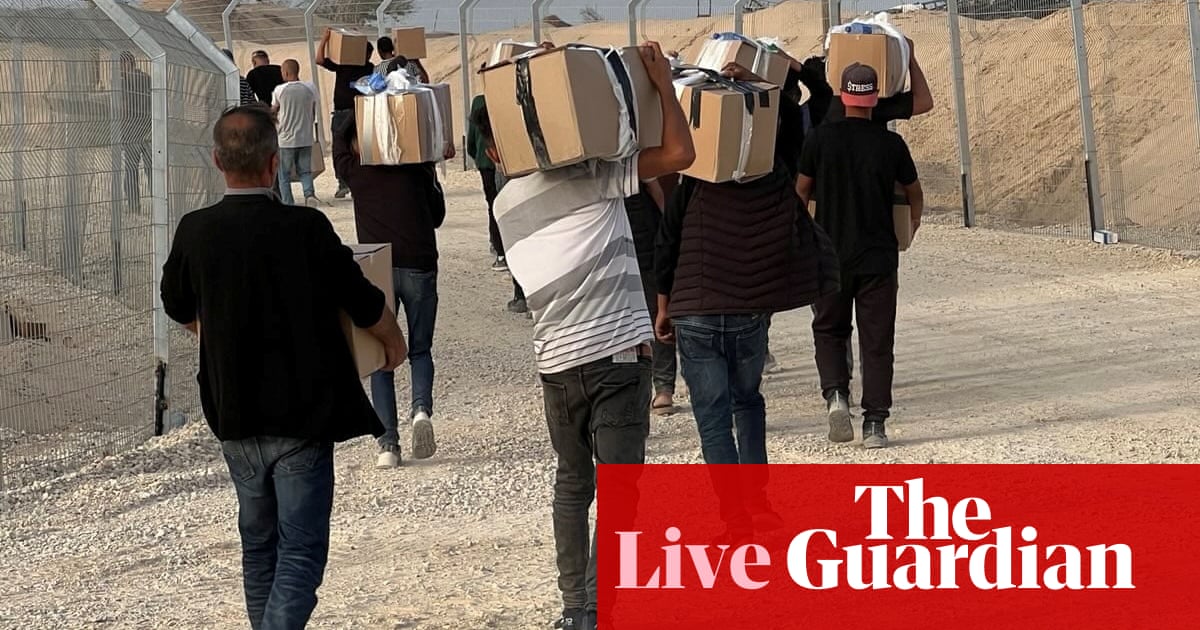We are continuing our live coverage of the latest developments in the Middle East, with a particular focus on Israel’s war on Gaza.
A US-backed foundation tasked with supplying aid toGazasaid it had begun operations on Monday, delivering truckloads of food to designated distribution sites a day after its executive director resigned because the operation could not fulfil its mission in a way that adhered to “humanitarian principles”.
The aid plan,which has been endorsed by Israel but rejected by the UN, unfolded amid uncertainty about whether any assistance had actually reached civilians.
Palestinians reported no sign of aid deliveries earlier on Monday, but theGaza Humanitarian Foundation(GHF) later said truckloads of food – it did not say how many – had been delivered to its hubs, and distribution had begun. It was not clear where the hubs were located or how those receiving supplies were chosen.
The GHF is taking over the handling of aid despite objections from the UN. The new aid plan has been described as unworkable, dangerous and potentially unlawful by aid agencies because it could lead to the forced mass transfer of populations.
Under the GHF plan, Palestinians, many of whom have been injured by Israeli airstrikes or exhausted from constantly moving in response to evacuation threats, would collect aid boxes weighing up to 20kg (44lbs) from four distribution points in southern Gaza.
The UN’s humanitarian chief, Tom Fletcher, said it would force further displacement and make “starvation a bargaining chip”.
On Sundaythe GHF’s head, Jake Wood, resigned, saying it had become clear the foundation would not be allowed to operate independently.
The organisation could not adhere “to the humanitarian principles of humanity, neutrality, impartiality, and independence, which I will not abandon,” Wood said as he called for Israel to allow the entry of more aid. You can read more on this storyhere.
Israel imposed its total aid blockade in early March, cutting off all supplies including food, medicine, shelter and fuel in what has been widely condemned as the collective punishment of the civilian population in Gaza.
Israel claimed the blockade was to pressure Hamas into releasing hostages, but in effect it left most of the 2.1 million Palestinians in the territory on the brink of starvation, with medicine and fuel supplies exhausted.
In some other developments:
At least 81 people have been killed in Israeli attacks across Gaza since early Monday, including 53 inGaza City,Al Jazeera is reporting, citing medical sources.
The Israeli military said this morning it had intercepted a missile and a projectile in separate launches fromYementoward Israel. Yemen’s Houthi rebels have regularly launched attacks they say are in response to Israel’s assault on Gaza.
The UN agency for Palestinian refugees,Unrwa, said Israel’s forced displacement of Palestinian people is treating Gaza’s population “like pinballs”. “In Gaza, people continue to be treated like pinballs forced to flee in search of safety that doesn’t exist,”the agency said in a post on X. “With nearly 20 months of war, people are exhausted, disoriented, grieving, and constantly in fear.”
